Ancient Rome began as a small city-state but grew into something far greater. Founded in 753 BC, it became one of the largest and most influential empires in human history. Roman power spread across vast lands, reaching from Britain to Egypt.
For over 1,000 years, Rome changed the course of history. Its armies conquered, its leaders ruled, and its culture thrived. Even after its fall, Rome's legacy lived on. Roads, buildings, and ideas from Rome still shape our world today.
This timeline tells Rome's story. From its beginning to its fall, each event played a part.
In this article
Part 1: Roman Empire Timeline
The history of Ancient Rome is divided into three main periods. It began with the Roman Kingdom from 753 to 509 BC. Then came the Roman Republic, which lasted from 509 to 27 BC. After that, the Roman Empire rose and ruled from 27 BC to 476 AD in the West, and until 1453 AD in the East, known as the Byzantine Empire.
Rome's timeline is full of change. It saw great expansion, strong leaders, and powerful armies. But it also faced wars, political struggles, and invasions. Let's take a closer look at the key events that shaped the history of Ancient Rome.
753 BC: The City of Rome was Found
Legend says Rome began with a tale of two brothers: Romulus and Remus. They were said to be the twin sons of Mars, the god of war, and were raised by a she-wolf in the wild.
Eventually, Romulus killed Remus in a dispute and named the new city after himself - Rome. From there, Rome grew under the rule of kings for over 240 years.
509 BC: Rome Became a Republic
The Romans had enough kings and kicked out their last monarch. They decided to rule themselves through elected officials called senators. This marked the beginning of the Roman Republic.
They created a constitution and a complex system of government. It wasn't perfect, but it gave citizens more voice. This form of rule would later inspire democracies around the world.
218 BC: Hannibal Invaded Italy
Hannibal, a Carthaginian general, made history by leading his army across the Alps, elephants and all. It was a bold and dangerous move meant to surprise Rome during the Second Punic War.
His plan worked. He invaded Italy and won several battles, terrifying the Roman people. Though he never captured Rome. But his strategy remains one of the most famous in military history.
73 BC: Spartacus Led Slave Revolt
Spartacus was a gladiator who decided he wanted more than just survival in the arena. Along with a group of fellow slaves, he broke free and started a rebellion.
The uprising grew quickly, drawing tens of thousands of followers. They fought the Roman army for two years. In the end, they were defeated, but Spartacus became a symbol of resistance and bravery.
45 BC: Julius Caesar Became the First Dictator of Rome
Julius Caesar returned to Rome after winning a civil war against his rival Pompey. He had crossed the Rubicon River, a bold move that sparked the conflict.
After his victory, Caesar made himself dictator for life. His leadership brought big changes to Rome, but many feared he had too much power. His rise marked the fall of the Roman Republic.
44 BC: Julius Caesar was Assassinated on the Ides of March
Just a year after becoming dictator, Caesar was murdered by a group of senators. Among them was Marcus Brutus, someone Caesar once trusted deeply.
They stabbed him on the Senate floor, hoping to save the Republic. Instead, Rome plunged into another civil war. Caesar's death changed everything and cleared the path for the Roman Empire to rise.
27 BC: Start of the Roman Empire Under Augustus
After years of fighting, Octavian, Caesar's adopted son, defeated his enemies and became Rome's sole ruler. He took the name Augustus.
Augustus became the first emperor, marking the end of the Republic and the start of the Roman Empire. Under his leadership, Rome entered a time of peace and growth known as the Pax Romana.
64 AD: Much of Rome Burns
A great fire broke out in the city of Rome and burned for days. It destroyed a large portion of the city and left many people homeless.
Legend says Emperor Nero watched it burn while playing music. Some even claimed he started the fire himself. Whether true or not, the disaster gave Nero an excuse to rebuild parts of Rome as he wanted.
80 AD: The Colosseum was Built
The Colosseum opened its doors in 80 AD under Emperor Titus. It was a massive amphitheater that could hold up to 50,000 spectators.
People came to watch gladiator battles, animal fights, and even sea battles reenacted inside. It was not only a place for entertainment but also a symbol of Roman power and engineering skill.
121 AD: The Hadrian Wall was Built
Emperor Hadrian ordered a huge wall to be built across northern Britain. It was meant to keep out the tribes from the north who were raiding Roman lands.
The wall stretched for 73 miles and included forts, towers, and gates. It marked the edge of the Roman Empire in Britain and showed how far Roman control had reached.
306 AD: Constantine Became Emperor
Constantine rose to power during a time of chaos. What made him truly stand out was his conversion to Christianity, a religion Rome had long persecuted.
He issued the Edict of Milan, which made Christianity legal. Constantine's reign changed Roman religion forever. He moved the empire's focus east by founding a new capital l Constantinople.
380 AD: Christianity Became State Religion
Under Emperor Theodosius I, Christianity went from legal to official. He banned all other religions. Shut down temples and outlawed old Roman gods.
From then on, Christianity wasn't just accepted; it was the empire's only legal faith. This decision would shape the religious identity of Europe for centuries to come.
395 AD: Rome Split into Two Empires
The Roman Empire had grown too large to manage. So in 395 AD, it was officially divided into Eastern and Western empires.
The Western Empire was ruled from Rome, while the Eastern Empire had its capital in Constantinople. This split made both halves weaker and opened the door to future invasions.
410 AD: The Visigoths Sacked Rome
The unthinkable happened in 410 AD; Rome was attacked and looted by the Visigoths, led by Alaric. The Eternal City had not been invaded in nearly 800 years.
This event shocked the Roman world. It showed that the Western Empire was crumbling and could no longer defend its heart. It was a dark sign of things to come.
476 AD: The Fall of Ancient Rome
In 476 AD, the last Western Roman Emperor, Romulus Augustulus, was overthrown by a Germanic leader named Odoacer.
This event is often seen as the official fall of Ancient Rome. It marked the end of classical civilization in the West and the beginning of the Middle Ages in Europe.
1453 AD: The Byzantine Empire Came to an End
The Eastern Roman Empire, also known as the Byzantine Empire, survived for nearly 1,000 years after the West fell. Its capital, Constantinople, became a center of culture and power.
But in 1453, the Ottomans captured the city. The fall of Constantinople marked the true end of the Roman Empire and the rise of a new era in world history.
Part 2: How to Make the Roman Empire Timeline in EdrawMind?
From Julius Caesar to the fall of Rome, the Roman Empire is full of exciting stories. But learning all the dates and events can be overwhelming. That's where EdrawMind helps; you can turn history into a colorful and easy-to-read timeline.
Here's how to get started with your Roman Empire timeline in EdrawMind.
Step 1: Sign in & Get Started
- Download and install EdrawMind to launch it.
- Or use EdrawMind online on your browser.
- Create a free Wondershare account to sign in. You can also use your social media accounts to log in.
- On the home screen, click the New Mindmap button to open a new file.
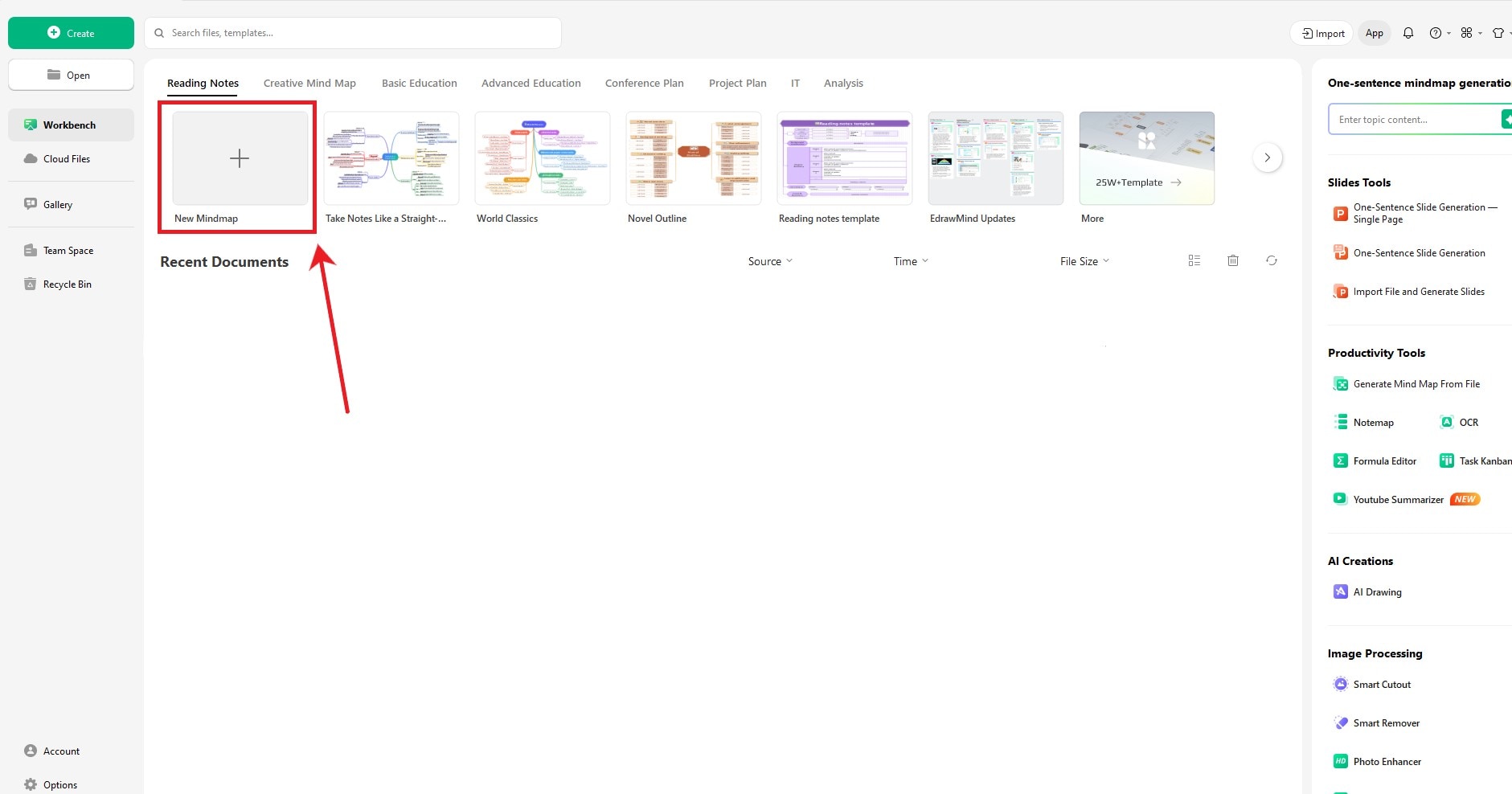
Step 2: Set the Timeline Layout
- Click on the Main Idea in your map.
- A small menu will appear, click Layout there.
- Choose Timeline (down) from the list to make your timeline go down
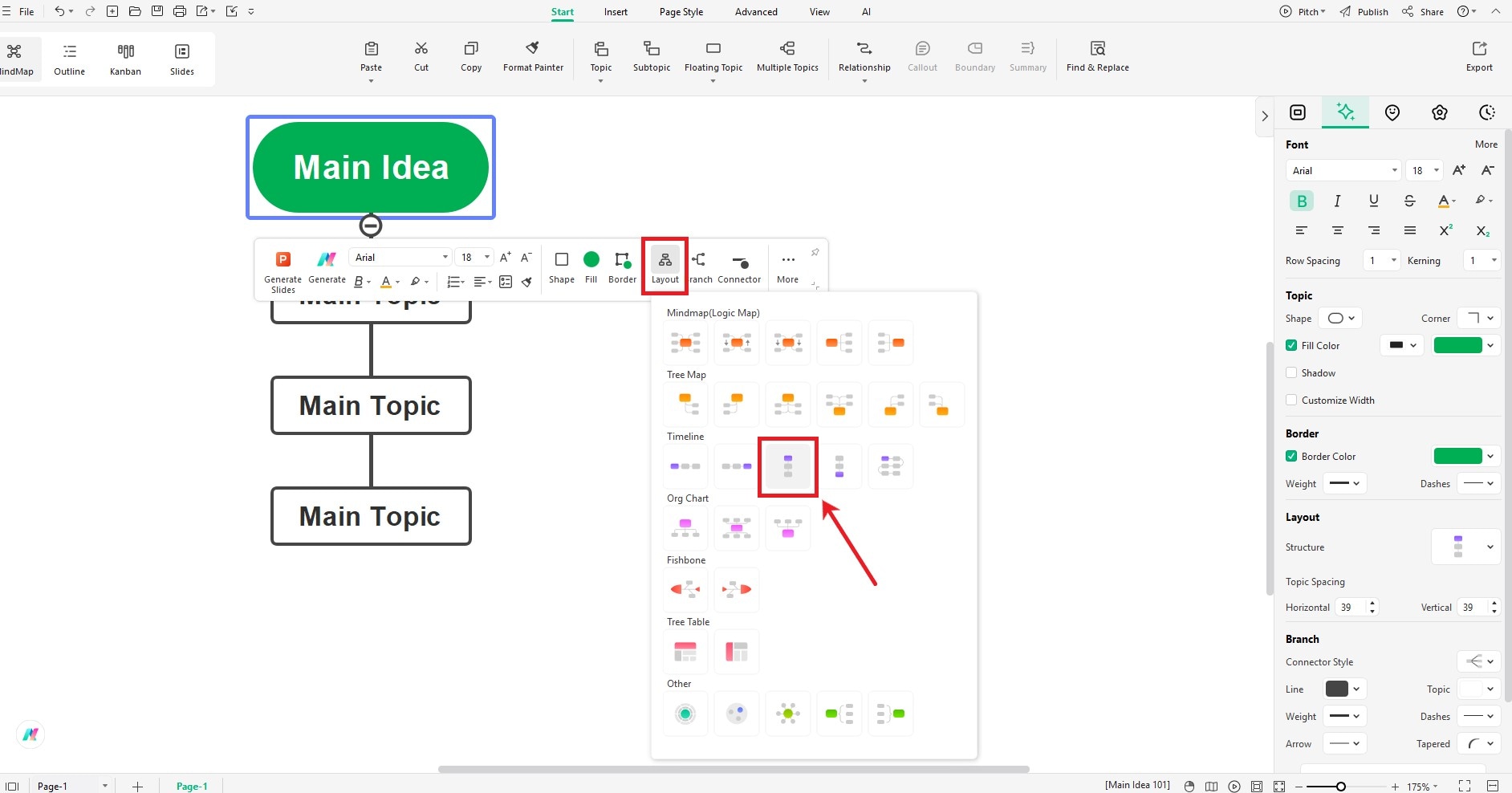
Step 3: Add Topics and Subtopics to the Timeline
- After choosing the timeline, click the Main Idea.
- Click Topic from the top menu bar. This will add a new item at the bottom.
- Click on one of the main topics you made.
- Now, click Subtopic from the top menu bar to add a smaller topic under it.
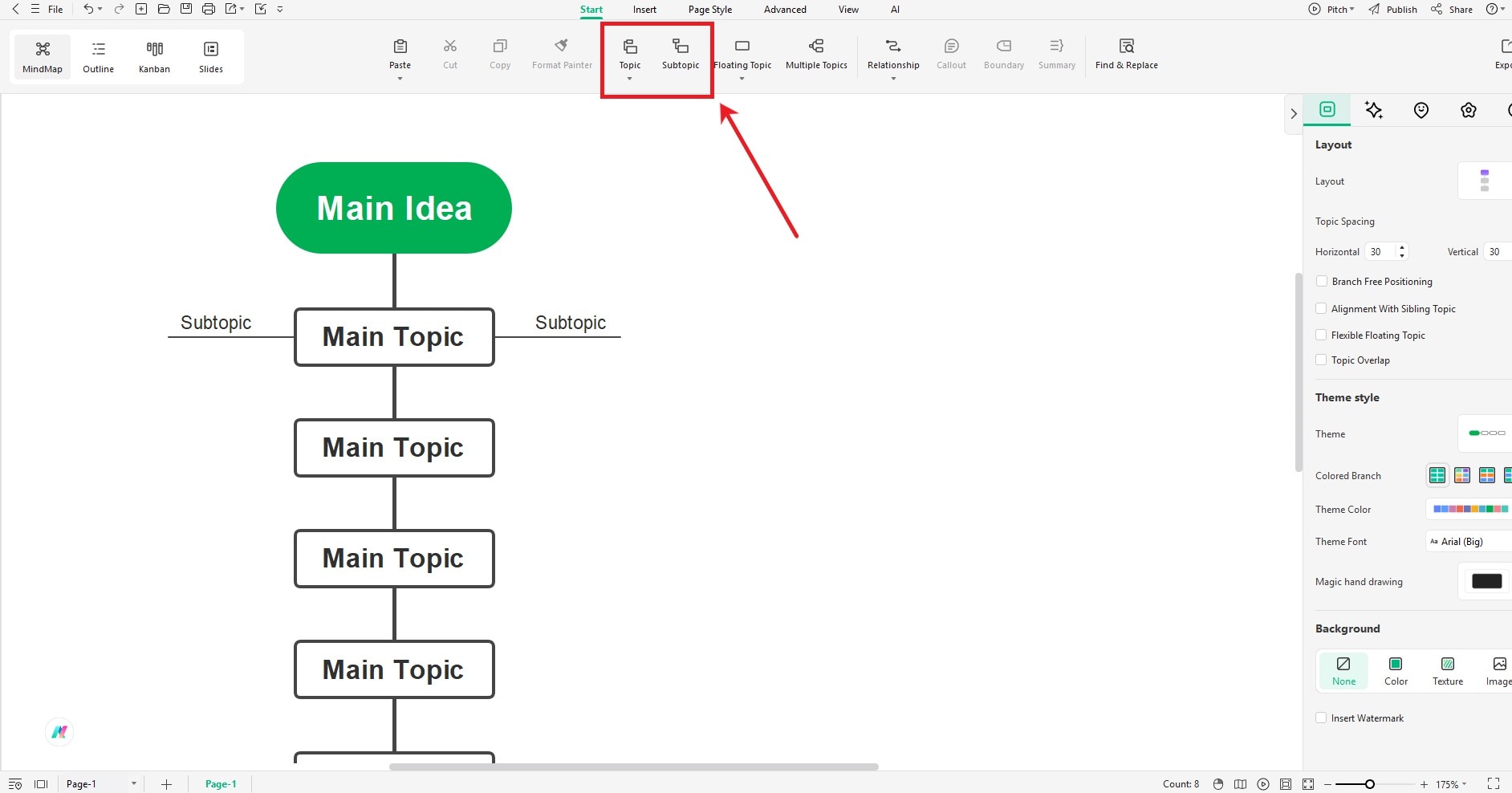
Step 4: Customize the Timeline Design
- Select the Main Idea or any topic you want to edit.
- Use the floating menu and the right toolbar to change its settings.
- To edit text, click on any item and type your new content.
- You can also adjust the font size and style using the floating menu.
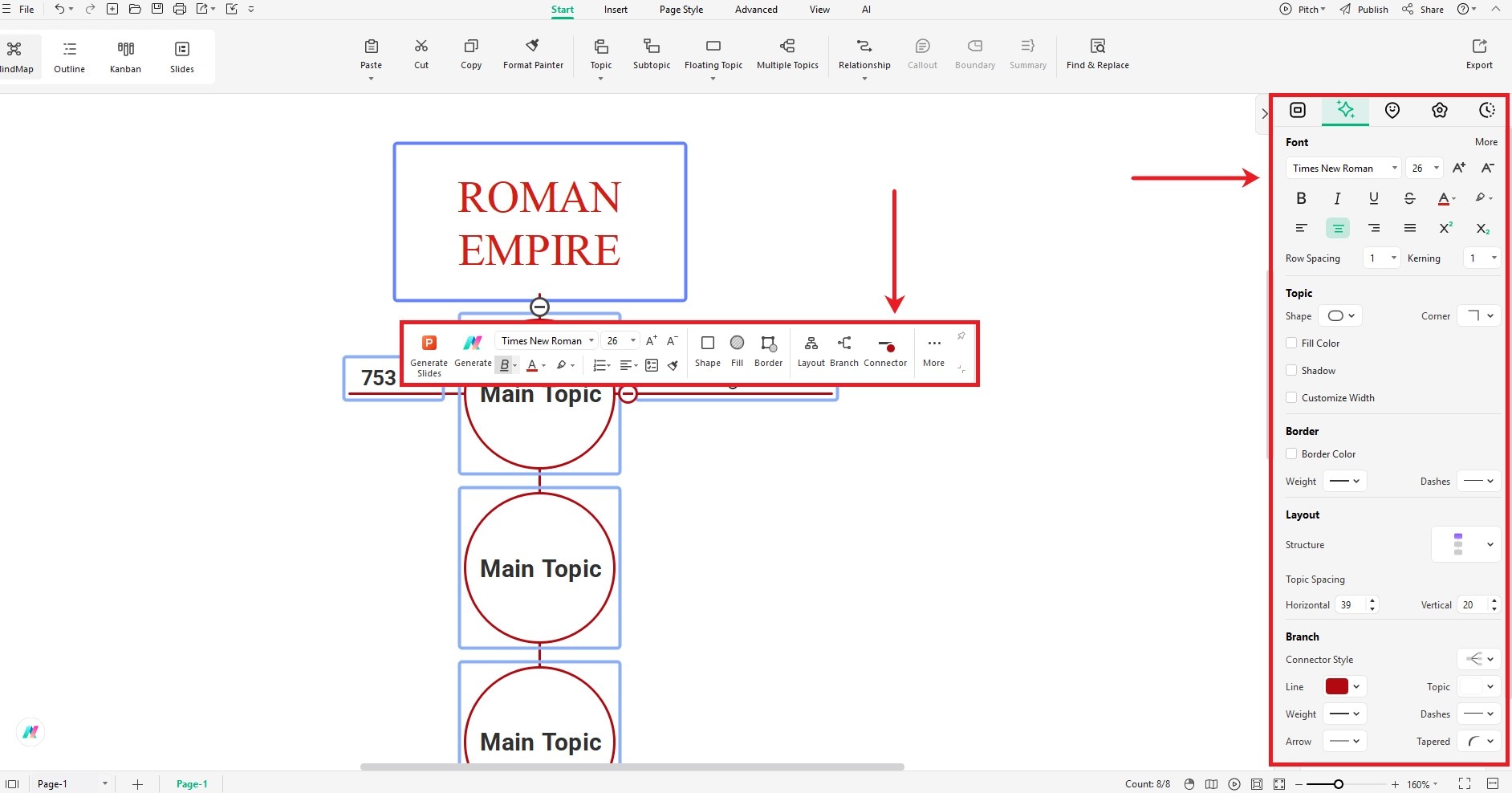
Step 5: Insert Images
- Download or copy an image you want to use.
- Paste it into EdrawMind, and drag the picture into the topic where you want it.
Step 6: Save or Share
- When you finish, click the File button at the top-left.
- Click Save to download the file to your device.
- You can also export your timeline as a PDF, picture, Word, or PowerPoint file by clicking the Export option.
- Or click the Share button to get a link or send the file by email.
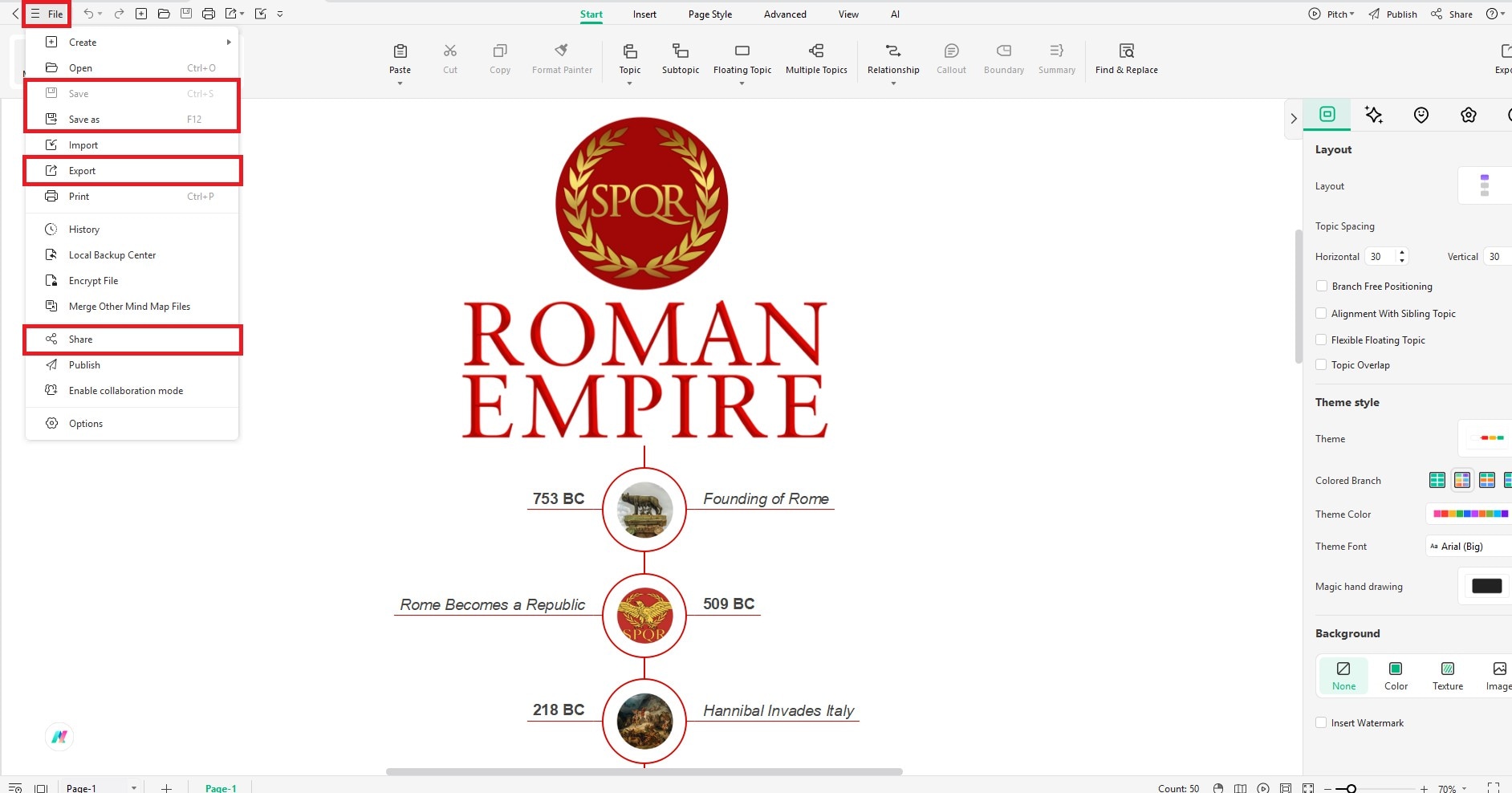
Final Thoughts
The history of Ancient Rome is a powerful story of rise, glory, and legacy. From its mythical founding to its ultimate fall, Rome shaped the world through innovation, conquest, and culture. Each milestone in its timeline tells a tale of ambition, transformation, and endurance. The Roman Empire may be gone, but its influence still echoes in our laws, cities, and ideas today.
If you want to explore it deeper, use EdrawMind to organize and present the Roman Empire's history clearly. It is an easy-to-use tool perfect for projects, presentations, or personal learning.






